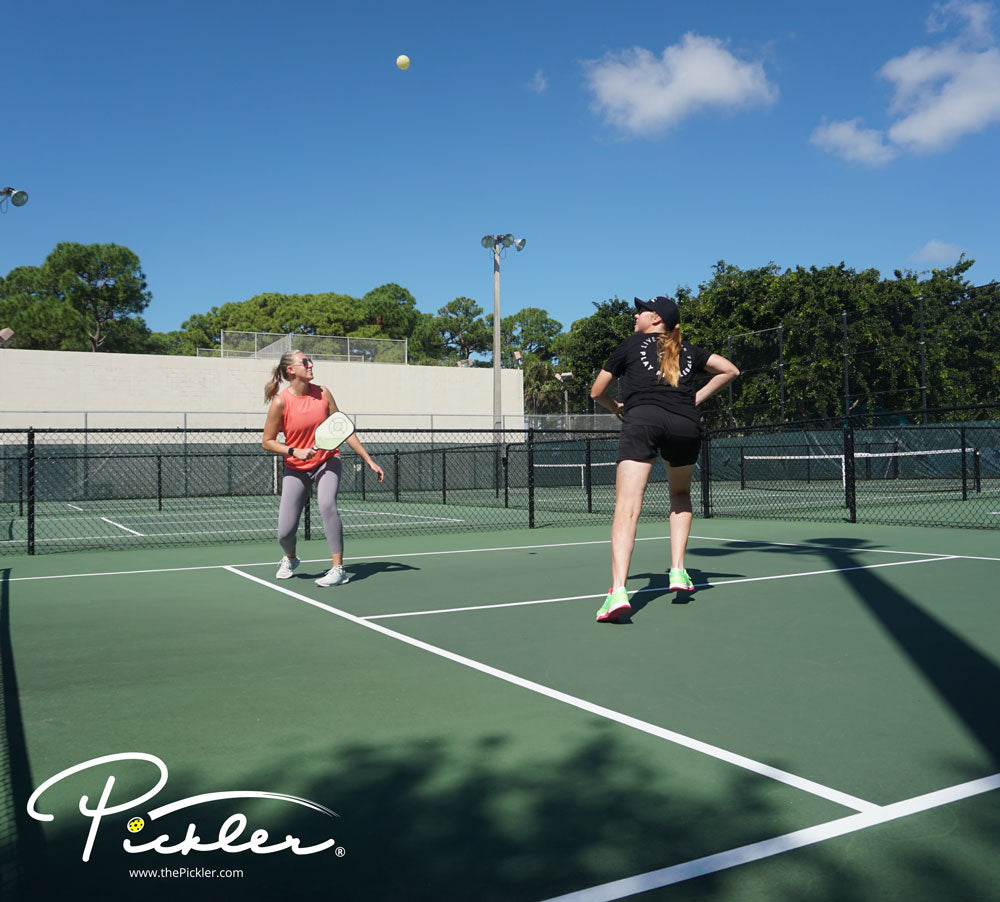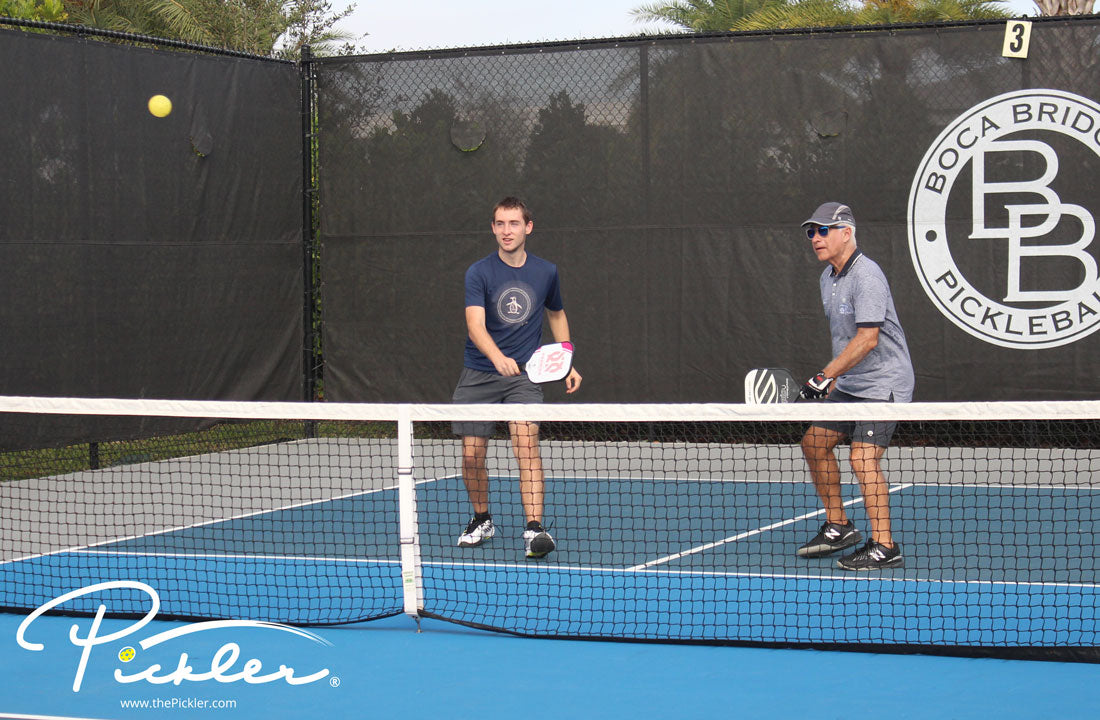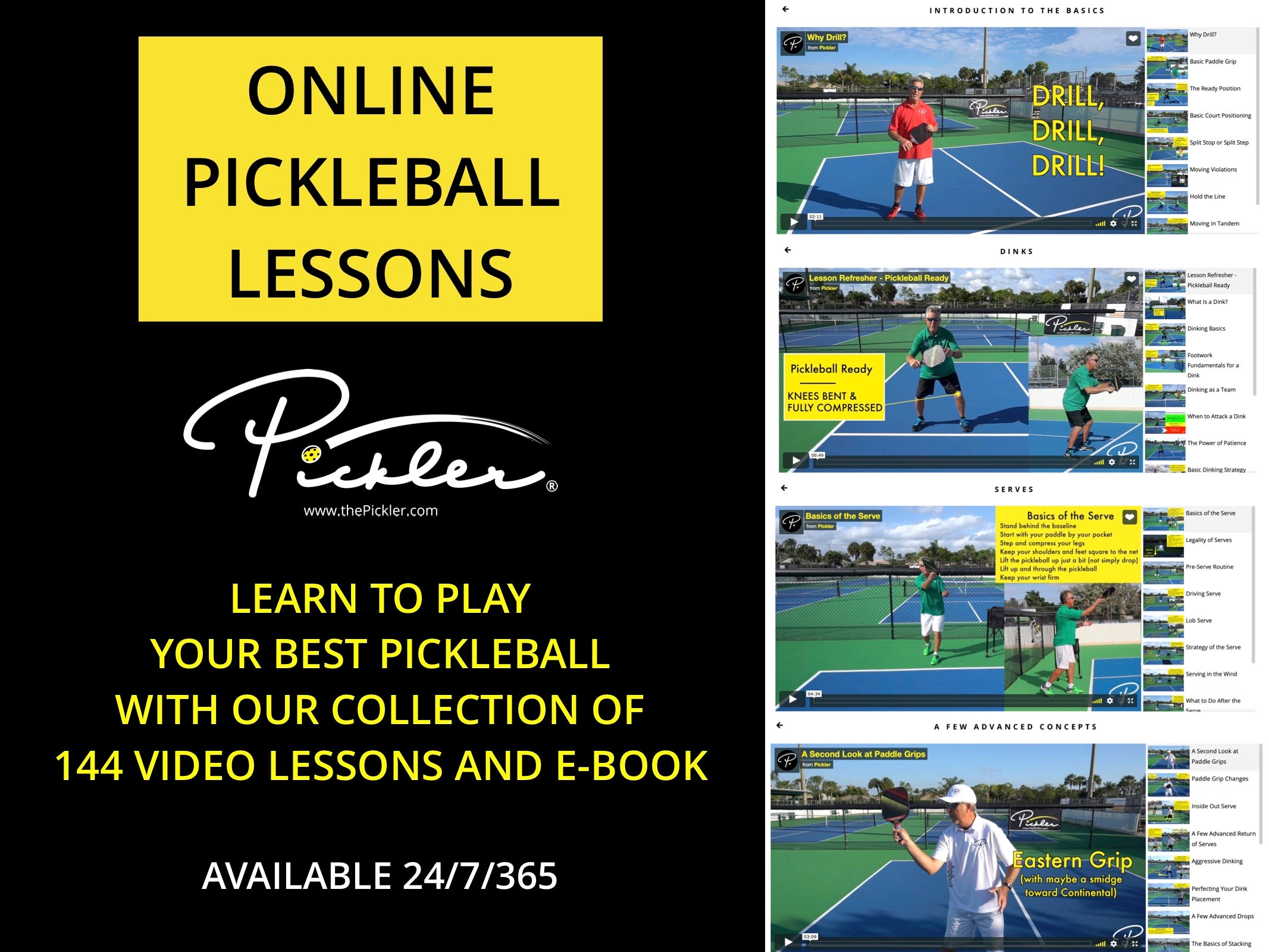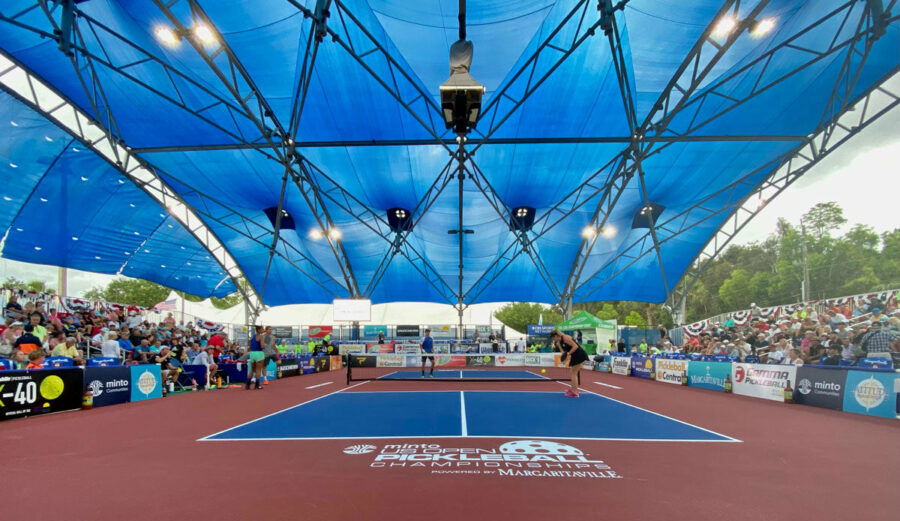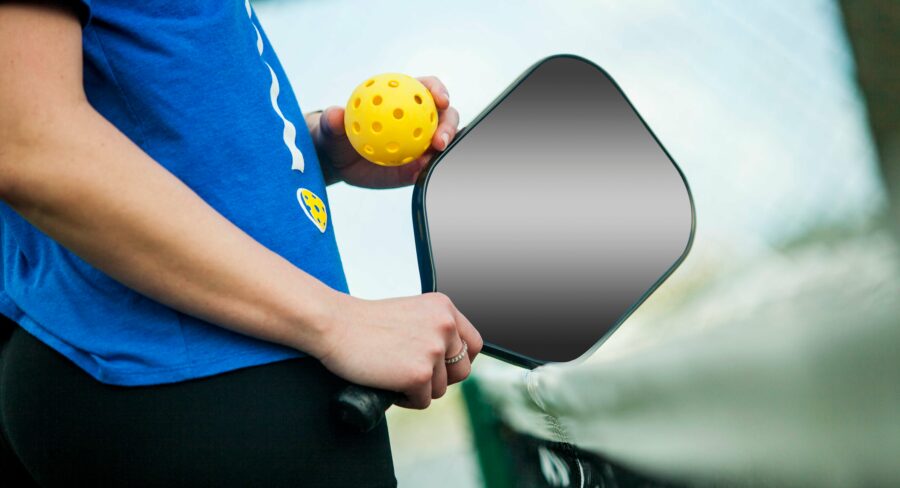Most pickleball players have a love-hate relationship with the lob. Some players love to hit the lob, while others hate to be on the receiving end of a lob. As a result, one of the most common questions asked of pickleball teaching pros is how to prevent a lobber from lobbing.
Before we dive into 3 tips to prevent the lobber from lobbing, remember, if you receive a lob, always turn sideways (in other words, drop step) and retreat to the baseline by facing the direction you are moving. Do not backpedal. Backpedaling can lead to injuries on the pickleball court. With that reminder, let’s dive into 3 tips to prevent the lobber from lobbing on the pickleball court:
- Keep your opponents back in the court. Put pressure on your opponents from the very first shot by hitting your serve (if you are serving) or your return of serve (if you are receiving) by keeping the pickleball deep in the court. It is very difficult for a lobber to hit a quality lob from deep in the pickleball court. So, keep your opponents deep, near the baseline. And, note that keeping your opponents deep in the court can be a balance—avoid making unforced errors by hitting the pickleball out of bounds by targeting your shots about 2 to 3 feet inside the baseline.
- Target the backhand. Most players have strong forehand shots, but weak backhand shots. This remains true with the lob. So, if you are playing against a lobber, consider whether he or she is able to lob off of his or her backhand side or whether he or she has a weaker lob off his or her backhand side. If so, then find and target that backhand of the lobber on the pickleball court.
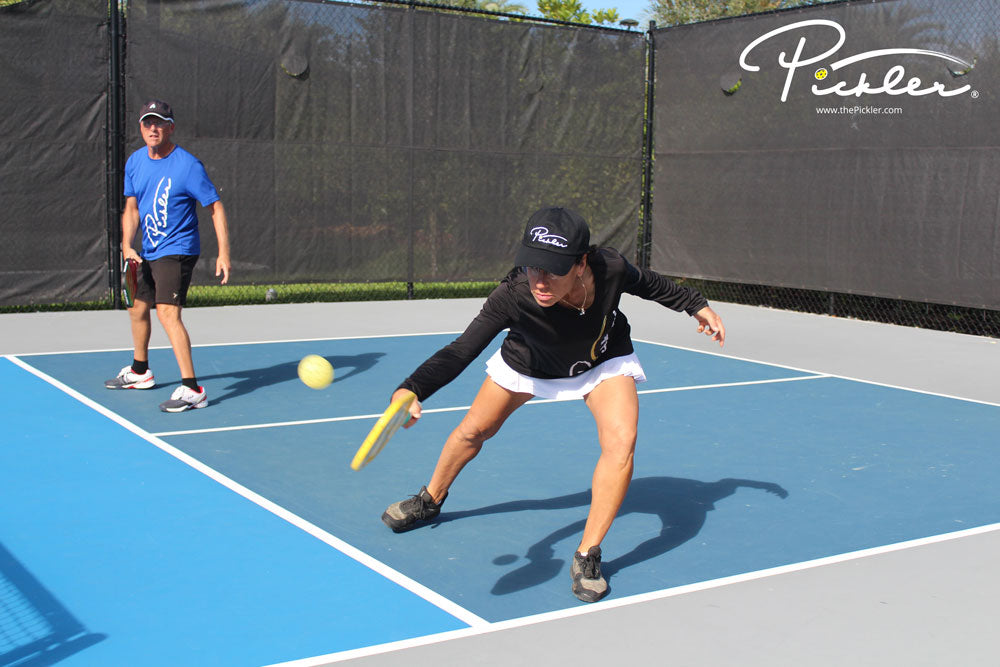
- Dink aggressively. No timid dinks. Imagine a pickleball that is gently hit up and over the net. It is a simple, slow, up-and-down trajectory. This would be a timid dink, which is very easy to lob because the dink and the resulting lob would have very similar trajectories. The lob would just be much higher in the air. By contrast, imagine an aggressive dink that is hit with pace and on a more flat trajectory toward your opponents’ feet. This is much more difficult to lob because your opponents would have to (1) get low, and (2) change the trajectory from a more aggressive downward angle to a high up-and-over trajectory. This is a difficult shot as more things can go wrong and more mistakes can happen. So, when playing a lobber, avoid timid dinks and, instead, hit aggressive dinks. Further, putting this together with tip #2, try to hit aggressive dinks to the lobber’s backhand side.
No more dreading those lobbers on the pickleball court. And, if “push comes to shove,” sometimes it is a good idea to lob the lobber first and set the tone for the match. Beat the lobbers at their own game.
WANT MORE PICKLEBALL TIPS AND STRATEGIES?
Want to learn how to hit the perfect lob on the pickleball court?
Plus, if you want more pickleball tips and strategies on every aspect of your pickleball game, check out Pickler’s online video lesson collection called My Pro Pickleball Coach. My Pro Pickleball Coach is a fraction of the price of one clinic or even one lesson, and features over 140 video lessons (over 7 hours of instruction!), as well as a corresponding e-book. These online video lessons are available on demand 24/7 and breakdown every aspect of the sport of pickleball, including pickleball drills, strategy, and advanced concepts, so you will play your best pickleball.

